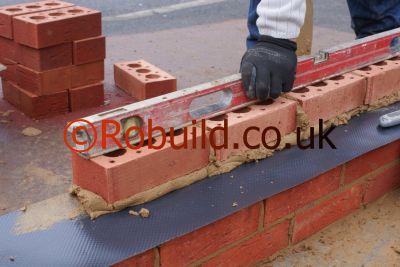
The extensive range of curtain tracks enables you to choose the type which best suits your room and the curtains you wish to hang. Make sure the track is strong enough to take the weight of the curtains; some plastic track will not be sufficiently sturdy to hold full length curtains, which may have to be hung on metal track. If the track will be visible when the curtains are hung, choose either a decorative track which blends with the room, or a plain. unobtrusive one which you can paint or leave white. Alternatively hide the rail by fitting a pelmet or valance in front of it.
Pelmet tracks
The traditional and still popular I-section track is not very attractive and therefore is mostly used with a pelmet or valance. It can be made from brass, aluminium, plastic or plastic-covered steel. Brackets. which clip into the top section of the track. hold the rail to the wall, window frame or ceiling. The curtain hooks are attached to double-wheel runners (on metal rails) or to nylon gliders (on plastic tracks). Strong enough to support heavy curtains. I-section rail is sufficiently flexible to be bent into tight curves (useful for fitting square bay windows or for forming overlaps). You can buy ready-made wood pelmets (finished in dark walnut, other timber or gilt) with the curtain track ready fitted and corded on a track board; this is attached by metal clips to the front and side assembly.
Non-pelmet tracks
Most modern tracks are designed for use without pelmets or valances. Some of these have the runners concealed in a box section or clipped over a flat rail. Box rails are normally flexible enough to be used in bay windows and recesses and can be bent to a radius as small as 50mm. But if you have to bend the track as tight as this, check with your supplier that the track is suitable. Tracks for use without pelmets are normally made from plastic or aluminium. Apart from a plain track, various finishes are available such as silver or gold coating, wood grain and carved wood. And you can buy ornamental finials (end pieces) which clip onto the track. You can also buy a fluted trim to clip over straight lengths of track to give the impression of a cornice pole. Another type of non-pelmet track is the neat, inconspicuous U-shaped channel, in which gliders slide. Ideal in recessed windows, it blends well with the clean lines of modern decor. Made from plastic or coated aluminium, it can be mounted on the wall or ceiling but is only suitable for straight runs. It is often used with a second track for hanging nets behind heavier curtains.
Cording sets
Available as optional extras with many tracks, these prevent wear and tear on the curtains caused by hand-pulling; even long curtains can be drawn with ease. Many cording sets have a device included in the kit to assist in the overlapping of curtains. You can fit any good corded curtain track with an electric curtain motor and connect it via a conveniently placed two-way control switch to a socket outlet or fused connection unit.
Curtain poles
For straight runs only, the old style curtain or cornice poles are again popular. The simplest design is a stout pole (of wood, plastic or metal with a brass finish) with plain or ornate turned ends mounted on matching brackets. Many modern curtain poles are made in the same styles as the old brass ones, but with easy-running false rings which slide in channels hidden behind the poles. Some poles are telescopic, fitting a range of widths, and they are often supplied with integral cording sets.
Hanging nets
Net or cafe-style half-pane curtains are usually hung on plastic-covered wires pushed through the top hem of the curtains. You can adjust the gathers as required, but it is almost impossible to open the curtains completely; so this method of hanging is really only suitable for curtains which will be left undisturbed. The neat and simple way of fixing plastic-covered curtain wire is by using rings and hooks. The ring screws into the end of the wire and the hook is screwed into the window frame. This can be done by hand, but if the wood is too hard or you want to put the fixing into the wall (if the window frames are metal) you can use a small round head screw instead.
With wall fixing you will have to drill a hole and plug it before inserting the screw. Make sure you leave a 6mm clearance between the screw head and the wall to allow for the ring to be hooked over the screw. Trim the curtain wire with pliers so it is slightly shorter than the width required. This ensures the wire is really tight when hung and the curtain does not sag. Screw the rings into each end of the wire, thread the wire through the top hem of the curtain and stretch the wire across the window, hanging it over the hooks or screws already fixed at each end. The curtain wire does tend to sag, so hang only lightweight curtains. (If you are hanging floor-to ceiling nets, use the neat U-channel track.)
An alternative method of hanging fixed net curtains is to use lightweight curtain rods (wood dowels are ideal) although you will not be able to open the curtains completely. The rods are fixed near the top of the window frame using curtain rod brackets; the cranked version is screwed to the window frame and the straight version is fixed to each side of the window recess (useful for metal window frames).





